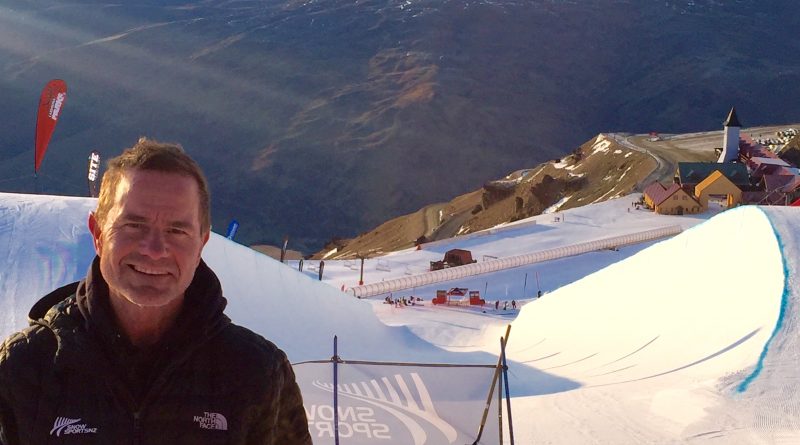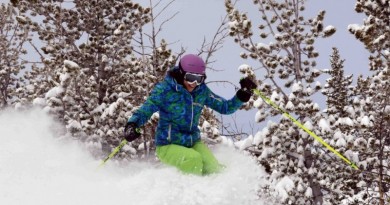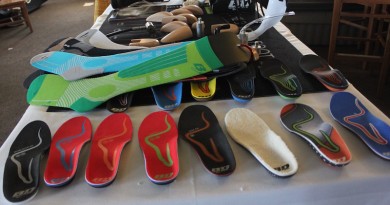What’s Your Progression Plan?
At the start of each ski season, most of us just buy our season passes, get new equipment, put on a fresh outfit and then get out. We plan to have fun, and we hope to improve.
But by setting some goals and coming up with a Personal Progression Plan you can significantly increase your chances of that, regardless of what level you are at.
Maybe you’re thinking: “Why do I need goals in my skiing or riding?” After all, don’t I just ski “for the fun of it.” Well, think about it: you move forward in your career, your living situations and your relationships. You try to be a better tennis player, golfer, surfer, or climber.
It is a natural to want to excel at things, to be a little bit better this week than we were last week. After all, what triumph or personal achievement are you going to brag about at the bar down the road over a drink or two?
Maybe you have a cat skiing or backcountry trip planned? Maybe you want to ski or ride a trail that you have never dared to go down? Maybe you dream of venturing into the woods for the first time? Of hitting a bigger jump or a more challenging rail than you have ever attempted before?
Perhaps you aspire to make 50 straight short-radius turns down a steep pitch that you have always had to stop and rest on or sideslip down before? Maybe you feel like you could do your first-ever top-to-bottom run, or do more runs in one day than you have ever done? Or perhaps you see yourself performing a new trick for the first time, or going bigger out of the halfpipe than ever before?
Having a goal, and then a logical plan in place—and sticking to it—is a sure-fire way to get better and progress in our sport.
A former pro rider who has coached Shaun White and other Olympic medalists at the elite level, I can tell you with confidence that although yours’ and Shaun’s goals are going to be totally different, the process of achieving them is actually exactly the same.
First, let’s take a look at Shaun’s way of getting things done:
Shaun White’s Process
The beginning point for Shaun’s plan is pinpointing his goal. He’ll then work backward from that point, identifying the individual pieces of the puzzle that he needs to check off along the way. He then comes up with a timeline with checkpoints to confirm his progress. Once the plan is made, he gets to work.
Shaun’s plan and timeline follow a familiar pattern: 1) Develop the strength and flexibility that will be necessary to achieve the goal (off-snow preparation). 2) Break it down into components that are buildings blocks toward achieving the goal, and practice them (small achievable goals). 3) Put all of the components together and achieve the goal when the time and situation are right (connect the dots, do it!). 4) Repeat and practice the newly acquired skill/movement/trick/run to make it second-nature (ingrain a skill through repetition).
He will also commit to a timeline for these checkpoints. An example might be: 1) Be physically ready and capable of performing the feat prior to hitting snow by mid-November, 2) Practice and master the new skills/movements that will be necessary for it by mid-December, 3) Perform the individual components of the new goal and begin edging up to it by mid- January, and 4) Link everything together and accomplish the goal by mid- February when the snow, weather, situation and your physical and mental state are all in alignment.
Ok so we are going to adopt Shaun’s structure for progressing (it’s certainly worked for him!) and we’ve got our template:
1) Off-Snow Preparation
You are going to want to build a strong general level of fitness going into the season, perhaps sign up for a ski or ride-specific training class at your gym. But there are also tons of things that you can do in and out of the gym to train more specifically for the feats that you want to perform.
Think about what you need to meet your goal: Maybe it’s building stamina, in which case treadmills, stationary bikes, stair-steppers, and hiking/running trails etc. are widely available. Flexibility may be what that you need in order to do what you want to do. Get yourself to stretching, yoga classes, etc.
Cross-training opportunities abound as well. If you want to be comfortable in the air, practice on a trampoline, diving board or airbags.
Mountain-biking extends your comfort zone in the woods which will transfer over to your skiing and riding. Rock-climbing can help suppress fear and golf will improve hand-eye coordination, focus, and overcoming adversity. Tennis, soccer, and agility ladders train you for quickness and agility. The list goes on.
Analyze your goal, and devise a training program that mimics and strengthen the movements and specific strengths you are going to need to achieve it.
2) Small Achievable Goals
Break your goal down into small steps that by themselves are not too daunting and easily achievable. By attaining each of these small goals you will put yourself in the position to ultimately link them together.
For instance, if your goal is to perform a 720 degree spin off a jump, you will need to learn a 180, a 360, and then a 540 first. If it’s 50 turns down a certain steep pitch that you’re after, maybe plan to make 50 solid turns down a mellow trail, then 50 down a slightly steeper trail. Finally go to your steep trail and start with 10. Then graduate to 20, then 30, and so forth down that pitch until you get to your 50.
If getting after it in the woods is your aim, start by dipping into little woods shots off the sides of the trails for a turn or two before committing to a full-blown woods run with no easy bailout option. When you are feeling confident and the conditions are just right, go for it with a friend.
Attach a timeline to your effort so that it’s not just “out there” with no accountability. Of course snow conditions can be fickle, so timelines may need to be changed, but better to commit to a schedule.
3) Connect the Dots, Do It!
No matter how much preparation you do, there comes a time to pull the trigger. And when it’s time (and you will know it), there are two things to keep in mind:
First, you have prepared for this moment, so feel empowered! You have trained specifically for this. You have broken the feat down into checkpoints of ability that you have systematically achieved and you are ready.
Choose the day and the conditions intelligently. When it’s 30 degrees below zero and overcast is not your time to send something new. When the sun is shining and the park is perfectly groomed is the time to take your trick to the next level. When two feet of fresh have fallen overnight is when to venture into the woods. When your steep pitch is fresh corduroy is probably the time to attack it for your 50 fall-line turns. Be smart and tilt the odds in your favor!
4) Ingrain the Skill through Repetition
Finally, practice your new accomplishment when conditions are good to ingrain it and really own it. It’s great to do something once, but the true measure of success is owning something, and being able to do it in any condition. Repeat your feat in conditions just slightly less-favorable than the conditions you had when you first accomplished it. Eventually you will be able to do it in a challenging situation. Then it will be time to move on to a new goal.
Bud Keene has been named National Coach of the Year, the highest coaching award in Olympic sports. He has coached Olympic snowboarding gold medalists Shaun White and Hannah Teter, freeski silver medalist Gus Kenworthy, extreme snowboarder Jake Blauvelt and dozens of other stars. He currently is coaching the New Zealand national ski and snowboard freestyle teams. He lives just north of Stowe with his wife Alex and hosts BKPRO coaching camps around the world.



